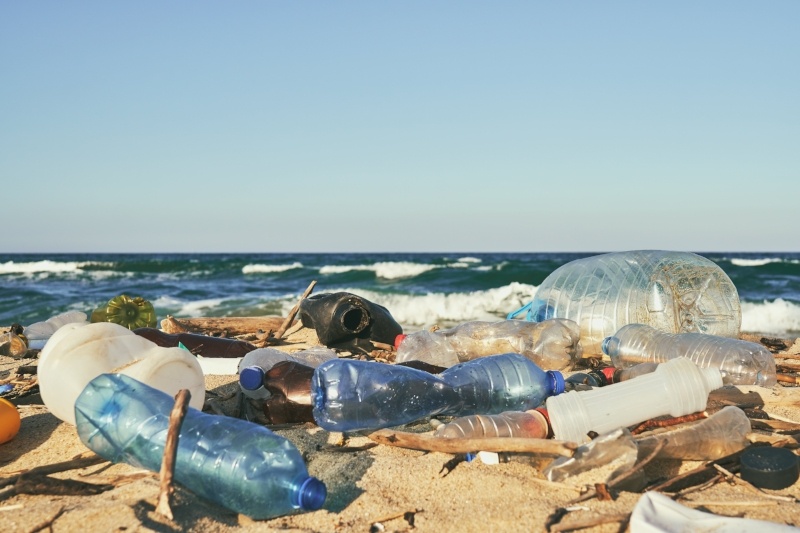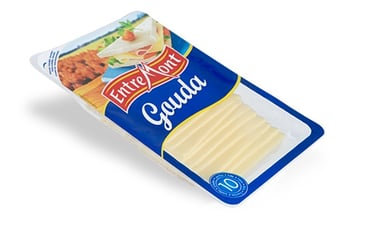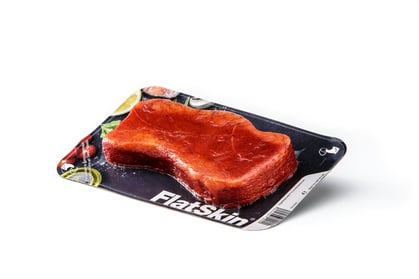
The EU ‘s banning of single use plastics in 2021 in a bid to decrease ocean pollution means that the UK has had to “adopt the rules as the ban became a fully-fledged directive before the end of a Brexit transition period.”
Add to this the huge issue of food waste and you have a massive eco-imperative that must be addressed to balance increased product shelf-life with more sustainable packaging materials.
So, how much progress is being made in this area by packaging companies, food manufacturers and the whole industry?
Extending product shelf-life—a traditional approach
MAP or Modified Atmosphere Packaging is the traditional method used within the packaging industry to increase product shelf-life. When fruit, vegetables, salad products or any kind of fresh protein is left in the open-air, bacteria flourishes and degrades the product, from colour and texture changes to loss of flavour.

MAP replaces the normal atmosphere inside a package with gases that suit the needs of the product. A vacuum pump removes and replaces the normal atmosphere with gases that preserve the product. Within Europe, MAP involves carbon dioxide, nitrogen and oxygen. The physical and chemical properties of the food product will determine which single or combination of gases is used and, depending on the nature of the product, this technique will extend the shelf-life of items by 50—500%.
The consumer buys a product that lasts longer, which minimises waste. The taste, colour and texture are improved, and the use of gases reduce the need for artificial preservatives.
For manufacturers there is minimal waste in production which significantly cuts costs. The extended shelf-life of products packaged using this technology allows for a wider market and potentially global distribution which can increase a company’s profit margin.
MAP technology is used in a range of sectors, from chilled (including ready-to-eat and ready-to-cook products) to snacks, ready meals and other pasteurised products. MAP can also be used with a wide range of packaging materials and formats, which is great news for the fight on food waste but, depending on the type of packaging, it may not be so sustainably beneficial.
Innovation and material science
Currently, all plastics—bio-based or fossil-based—fall into one of three categories: biodegradable, compostable, and non-biodegradable—the worst offender. At this point in time, biodegradable and compostable solutions tend to have performance limitations that typically make them less suitable for MAP applications, freezing or oven-use – however innovation continues apace.
Although the UK government has already pledged to invest £20 million in new packaging technologies, it’s clear that further investment is essential in this area and in material science innovation.
With food manufacturers and packaging companies committing to the development of sustainable packaging solutions, just how much progress has been made to date?
Each organisation is approaching the issue from a different angle and slightly different time targets. However, there are several collaborative initiatives working towards the same goal. For example, the UK Plastics Pact is a collective initiative that unites businesses from across the plastic and packaging industry with the UK government and non-governmental organisations (NGOs) in an attempt to tackle the problem of plastic pollution.
It’s now accepted by most that zero plastics is probably an unrealistic goal because of the many uses and benefits of plastic and the possible carbon footprint of its alternatives.
The focus now is on a realistic and attainable goal of reducing the amount of plastic that’s sent to landfill and ends up in our oceans, by cutting down on the number of single-use plastics.
Sustainable packaging solutions
When it comes to developments within the packaging industry, we are committed to contributing to this cause and are constantly striving to develop new and innovative products and applications through our strong partnerships with customers and packaging suppliers.
TraySkin®
At SEALPAC UK, we are not only dedicated to driving the optimisation of packaging technology by opening up new opportunities to the industry, but we also want to tackle head-on the global issue of food waste.
This was the driving force behind our TraySkin® packaging solution—a vacuum packaging system which extends the shelf-life of food products. From meat and poultry to seafood, snacks or even complete ready meals with multiple components, this revolutionary system reduces the food-waste problem.
TraySkin® comprises a highly transparent barrier film which fits the contours of the product like a second skin, holding the contents securely in the tray. During the sealing process, the atmosphere is completely withdrawn from the pack, meaning no gases have to be added to prevent the product from spoiling.
As well as extending product shelf-life, TraySkin® extends freshness and improves product quality and helps reduce food waste.
Flatskin®
Our passion for creating sustainable packaging systems that preserve food for longer did not end with TraySkin®. Determination and significant R&D investment led to our latest packaging innovation—Flatskin®—a system that not only uses 75% less plastic than standard food packaging but also ensures optimum product condition. It also introduces new opportunities to present product, such as vertical hanging.

Ideal for maintaining the freshness of meat, poultry, seafood and vegetarian choices, FlatSkin® is a deep-vacuum system that preserves 100% product freshness, from point-of-package to consumer purchase, storage and consumption.
- FlatSkin® also allows purchasers to easily separate all the components once the product has been consumed, streamlining a 100% recycling process.
- We are confident that FlatSkin® minimises food waste and offers a more sustainable packaging solution.
- The bonus of both the TraySkin® and the FlatSkin® technology is that it’s simply a case of changing packaging materials and methods rather than purchasing a whole new machine.
The SEALPAC UK Way Forward
It’s self-evident that reducing food waste by preserving the shelf-life of products whilst using more sustainable packaging is possible, and great strides have been made to achieve this.
By championing this environmental imperative, we strive to encourage fellow companies to invest in a pollution-free future for our planet and its diverse ecosystems.


